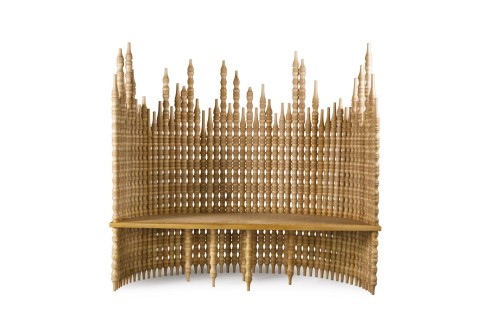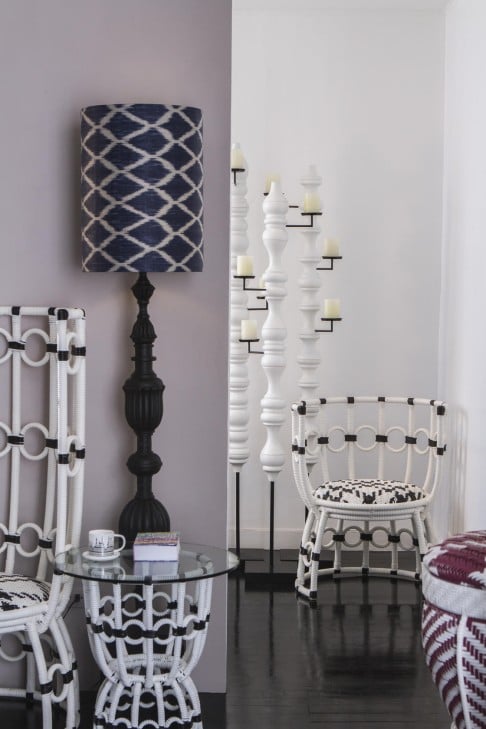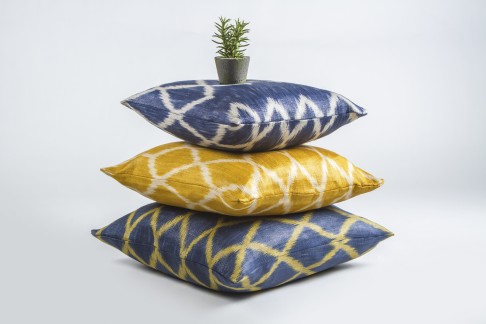
Ito Kish is putting Filipino design on the global map
A Filipino businessman-turned-designer is gaining worldwide attention for homeware that combines local handicrafts with the use of natural materials

Of all the things that might tempt an 11-year-old to part with his pocket money, plaid wrapping paper seems rather unlikely. Yet a young Ito Kish had eyes for only this.
He was living with his mother and sister in a tiny provincial home outside Manila, and when it rained the roof leaked. Bothered by the stains this left on the walls, the boy saved up cash from selling sweets at school, and while his mother was at work one day, papered over them with the gift wrap he'd purchased.
"It looked beautiful," Kish recalls. Although something within him understood then that design was his destiny, it would be decades before this was realised.
Taking his mother's counsel that business was a more productive course, Kish studied marketing, working locally and in Indonesia, then returned home in 1998, armed with a container-load of furniture.
Then in his 30s, Kish, the businessman, opened an eponymous furniture store. It was successful and, as 2012 approached, Kish, the marketer, thought that joining the furniture fair Manila FAME might be good for business. But this required original designs. So he put pencil to paper, and came up with the Gregoria Lounge - his very first piece, inspired by the intricately designed balustrades of his old family home - and named it after his mother (Gregoria Kish).

Now 52, Kish, the designer, is a rising star within an emerging Philippine design community. After winning best in show at Manila in 2012, he took the Gregoria to the A'Design competition in Como, Italy, winning silver. The press took notice, and Kish got busy designing Baluster, his second collection. It won Manila FAME 2013, so Kish took it to Maison & Objet Paris (and later Singapore), the International Contemporary Furniture Fair New York, and Salone Internazionale del Mobile in Milan, where it was reported in design circles that "[the Philippines] is gaining a name as the 'Milan of the East'."
Kish regards New York as his career breakthrough, after the US edition of Elle Decor featured his Gregoria on the opening page of "what's hot". ("The opening page!" he marvels). He was also chuffed this year when, after being named an icon of Asia at the Gwangju Design Biennale, that same chair was chosen to join the world's most iconic furniture pieces in DDP (dream, design, play), a Zaha Hadid-designed cultural centre in Seoul, alongside designs by the likes of Ron Arad and Philippe Starck.
Kish believes Filipinos have inherent design sensibilities, introduced long ago by the Spaniards, which makes their furniture styles unique in Asia. The natural materials used in production, which a happen to be right on trend, are borne of necessity, he adds.
"The Philippines is very much a handcraft-based society. We are a tropical archipelago; we can't produce furniture using metal and glass. All our materials come from nature, like rattan, bamboo and shells."
My design always be about who I am and where I come from
Proud of his heritage, Kish designs in the language of his nation. "My design will always be about who I am and where I come from," he says.
The baluster featured in the Gregoria (now part of Kish's Baluster collection) replicates one of the key decorative elements of traditional Filipino home design. Its backrest is made of kiln-dried gmelina, a fast-growing hardwood, and its seat from split rattan solihiya - both sustainable materials farmed and sourced locally.
All his collections - now numbering around 10 - display that parochial ethos, and all bear a Filipino name. The Basilisa collection of beds, chairs, tables and benches (named after Kish's grandmother) is made with kiln-dried mahogany and rattan, showcasing five different weaves representing the five regions of the archipelago.

The Rosario lamp collection is made from kiln-dried gmelina and shagreen, or stingray leather; its name, and form - inspired by cathedral candelabras - a nod to the Philippines' Catholic heritage. His Sebu cushions are handwoven from t'nalak, a traditional textile made of abacá fibres, which is a design staple of ethnic Philippine tribes, their intricate motifs and striking hues representing the dreams of indigenous weavers.
Kish's Santamaria stools are inspired by the artistry of ancient ethnic groups, their patterns woven into a shape drawn from tribal tingkop baskets; and Busilak - the Tagalog word for immaculate - is a selection of clear, lit-up bell jars, with organic textures and compact coronets the designer envisages as "perfect for minuscule objects of virtu".
Every collection has a story, he says. "I always start with a story, then work on the design and the products."
It's an exciting time to be a Filipino, Kish declares, not only because the nation's economy is doing well, property development is booming and people have more money to decorate their homes, but because home-grown designers are finally able to make their debut on the world stage.

"The Philippines have gone through some really bad times," he concedes. "Even the government could not give priority to promote Philippine design. Now that the economy is good, it has provided some budget for us to show our wares at some of the big international trade shows." Since the global press has taken notice, "I think we will see a lot more of Philippine design to come".
Now the Ito Kish brand is gaining worldwide attention, with a newly launched private-label website itokish.com buyers coming from afar to visit Kish's Manila showroom, and export orders increasing. Meanwhile, he is starting two retail sub-brands: F1RST, for entry-level homemakers, with two stores opening this month and in April, and upmarket Gallano Designs, debuting at the new Conrad Hotel, also in Manila, in February.
"I think it's a good combination," Kish says of his basket of skills. "You can't have a business without marketing."
He's also planning the next round of international trade fair appearances, and courting potential partners whom, he hopes, could propel Ito Kish into truly a global brand. "I'd love to be [represented] in New York, Tokyo or Hong Kong," the designer muses. "I might just have to work harder."